
-
Find the right food for your petTake this quiz to see which food may be the best for your furry friend.Find the right food for your petTake this quiz to see which food may be the best for your furry friend.Featured products
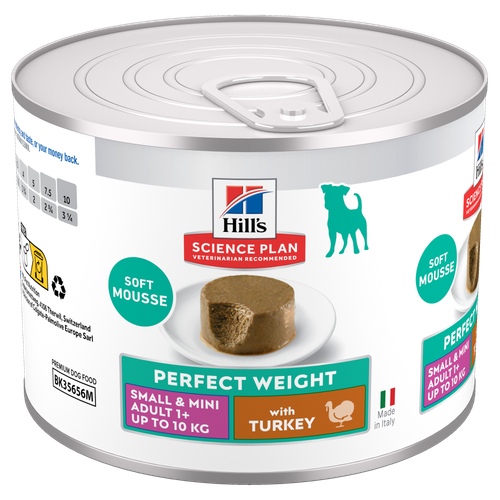 Perfect Weight Small & Mini Adult Dog Food
Perfect Weight Small & Mini Adult Dog FoodHill's Science Plan Adult Small & Mini Dog Food with Turkey is a complete premium pet food for adult small dogs from 1 year old that are prone to weight gain or slightly overweight. This deliciously smooth mousse is formulated to deliver the appropriate amount of energy to support weight maintenance in adult dogs.
Shop Now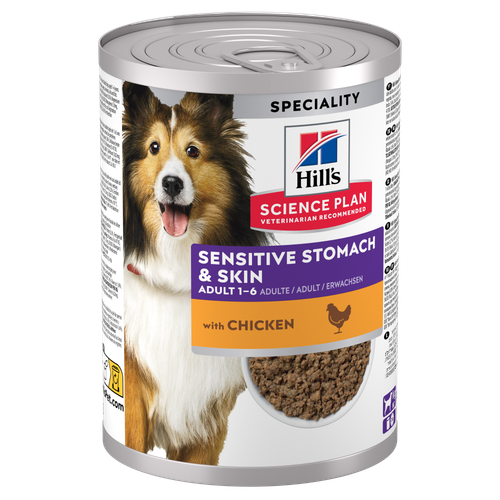 Sensitive Stomach & Skin Dog Food
Sensitive Stomach & Skin Dog FoodHill's Science Plan Sensitive Stomach & Skin Adult Wet Dog Food with Chicken is a complete premium dog food for adult dogs from 1 year. This savoury tinned loaf is enriched with ingredients that support digestive health & skin care.
Shop Now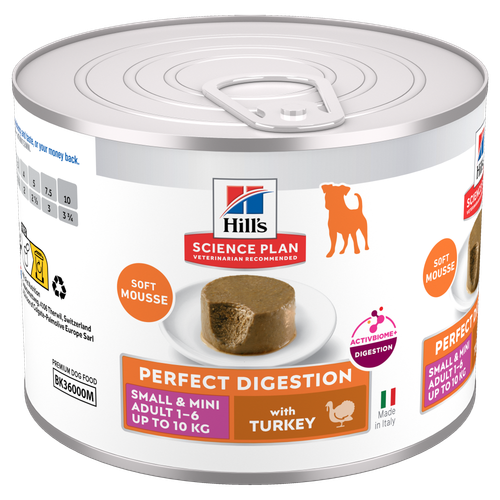 Perfect Digestion Small & Mini Adult Dog Food
Perfect Digestion Small & Mini Adult Dog FoodHill's Science Plan Perfect Digestion Small & Mini Adult Dog Food with Turkey is a complete premium pet food for small breed adult dogs aged 1–6 years. This deliciously smooth mousse is precisely balanced to deliver the appropriate amount of energy and to support digestive health in adult, small breed dogs.
Shop NowFeatured products Mature Adult Wet Cat Food with Chicken
Mature Adult Wet Cat Food with Chicken
Tender chicken chunks in gravy for mature adult cats. Made with easy-to-digest ingredients, high-quality protein for lean muscle maintenance and antioxidant vitamins C+E for optimal health.
Shop Now Adult Multipack Wet Cat Food with Beef, Ocean Fish & Chicken
Adult Multipack Wet Cat Food with Beef, Ocean Fish & ChickenTender chunks in gravy for cats, with high-quality protein to maintain lean muscle. With vitamin E and omega-3s & -6s for healthy skin and balanced minerals to support healthy vital organs.
Shop Now Light Adult Multipack Wet Cat Food with Chicken & Ocean Fish
Light Adult Multipack Wet Cat Food with Chicken & Ocean FishTender chicken chunks in gravy for cats, with L-carnitine and fewer calories for ideal weight management. Packed with high-quality protein, omega-6s, and vitamin E for shiny fur and healthy skin.
Shop Now -
Dog
- Dog Tips & Articles
-
Health Category
- Weight
- Food & Environmental Sensitivities
- Urinary
- Digestive
- Joint
- Kidney
-
Life Stage
- Puppy Nutrition
- Adult Nutrition
- Senior Nutrition
Cat- Cat Tips & Articles
-
Health Category
- Weight
- Skin & Food Sensitivities
- Urinary
- Digestive
- Kidney
-
Life Stage
- Kitten Nutrition
- Adult Nutrition
Featured articles The Incredible Science Behind Your Pet's Microbiome
The Incredible Science Behind Your Pet's MicrobiomeLearn what your pet's microbiome is, how it contributes to your pet's gut and overall health, and why nutrition is important in maintaining healthy microbiomes.
Read More Show some love with wet foods: a great choice for pets with health issues
Show some love with wet foods: a great choice for pets with health issuesShow some love with wet foods: a great choice for pets with health issues.
Read More The Right Diet For Your Pet
The Right Diet For Your PetIn people, the right diet is very important. If you are eating the wrong way for your metabolism, activity level, age and lifestyle you could end up with health issues.
Read More -


When a pet emergency occurs, it's important to know what to do in the moment of distress. From performing the cat Heimlich manoeuvre to preventing choking accidents, learn some important ways to help your cat in a crisis.

What Can I Do?
Sometimes a cat choking incident is caused by a hairball that they can't expel, but accidents are more often the result of an object (food, hair tie or plastic toy) lodged in the throat. If you see your cat choking, try to remain as calm as possible while you determine whether or not their airway is really blocked. If it's simply a hairball, your cat will have it out in a few seconds. If there is an obstruction, you will need to follow two steps.
- Mouth sweep: First, gently open your cat's jaws and sweep the mouth with your index finger to see if you can remove the obstruction. Look inside the mouth while you're checking for an object to avoid pushing anything farther down the throat, says Cat-World Australia, and gently pull the tongue forward to check the back of the throat. If you don't see anything or cannot conduct a safe sweep, move on to the Heimlich manoeuvre.
- Cat Heimlich: When performing a cat Heimlich manoeuvre you hold your kitty with their back against your chest and feet hanging. Use your hands to gently but firmly push on the belly in a succession of quick, upward thrusts, about five times. If your first set of blows doesn't dislodge the object, says PetCoach, hold your cat up by the back hips with head down and gently sweep their mouth again. Tap your hand firmly against the back and check the mouth again. After you remove the obstruction, bring your cat to the nearest emergency veterinary clinic immediately.


Tasty Tips
Can I Prevent My Cat From Choking?
Eliminating cat choking hazards in the first place is a key way to keep your pet safe. Take a walk through your home and think like a cat: What's small, shiny and could be easily swallowed? Common choking hazards include:
- Craft supplies like pom-poms and pipe cleaners
- Rubber bands
- Paper clips and staples
- Plastic bags and cellophane
- Bottle caps and wine corks
- Straws
- Aluminium foil
Curious cats will go exploring when you're not home, so store your stuff in a pet-proof location. Never let your kitty play with rubbish like wadded-up aluminium foil or plastic bags. They may have fun doing it, but it only takes a second for those objects to become stuck in their throat.

Cat Toy Safety
Some cat toys can be dangerous as well. Avoid toys that have dangling decorations like feathers, bells and googly eyes. Opt for larger toys like balls, toy mice or crumpled pieces of paper that are larger than your cat's mouth. The two of you can enjoy supervised playtime with the popular fishing pole-style toys, but tuck them out of reach when your cat is out of your sight.
Despite the common image of a cute kitten playing with a ball of yarn, it's not safe for your cat to play with any kind of string or ribbons — they are choking hazards. If your cat has a string hanging out of their mouth (or rectum) says Animal Planet, do not try to pull it out. You could damage the throat or intestines. Consider it an emergency situation and contact your veterinarian immediately if you suspect your cat has swallowed string.
What Else Causes Choking?
In rare cases your cat could be hacking and gasping because of an underlying health issue. When your kitty throws up a hairball, for example, they cough until the pesky wad of hair comes up. This isn't a choking emergency, but it's uncomfortable for your furry friend. A hairball that won't come up could lead to serious medical problems, if it becomes trapped and blocks the digestive tract. If your cat hacks up a hairball more than once a week or so, talk to your vet about starting them on a hairball control food or other regimen that will keep wads from forming. Hairballs can also be a sign of underlying gastrointestinal disease.
In some cases, the Cornell Feline Health Center notes, frequent gagging may be a sign of a gastrointestinal problem or a respiratory ailment like asthma. To determine what's causing the coughing and find help for your cat, make an appointment with your vet.


Christine O'Brien is a writer, mom, and long-time cat parent whose two Russian Blues rule the house. Her work also appears in Care.com, What to Expect, and Fit Pregnancy, where she writes about pets, pregnancy, and family life. Find and follow her on Instagram and Twitter @brovelliobrien.
Related products
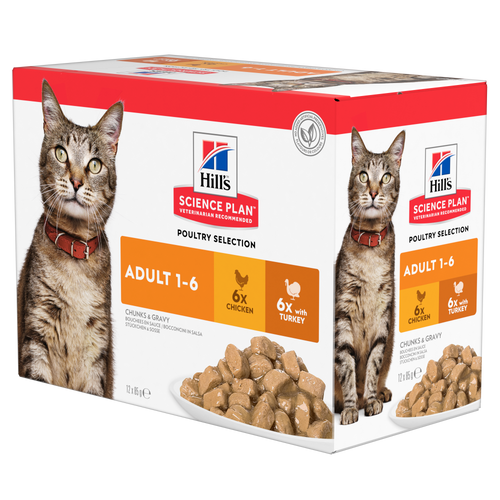

Tender chicken chunks in gravy for cats, with L-carnitine and fewer calories for ideal weight management. Packed with high-quality protein, omega-6s, and vitamin E for shiny fur and healthy skin.

Tender chicken chunks in gravy for mature adult cats. Made with easy-to-digest ingredients, high-quality protein for lean muscle maintenance and antioxidant vitamins C+E for optimal health.

Tender chunks in gravy for cats, with high-quality protein to maintain lean muscle. With vitamin E and omega-3s & -6s for healthy skin and balanced minerals to support healthy vital organs.
Related articles

There are three common ways to feed a cat. Each way has its advantages and disadvantages.
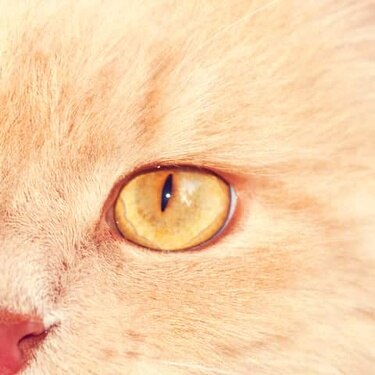
Chocolate is known to be poisonous for dogs, but it can also be toxic for cats. Learn why chocolate is bad for cats & what to do if she's eaten it.
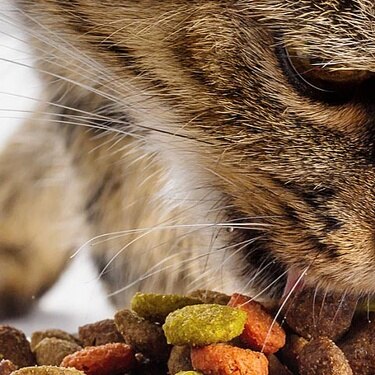
From essential vitamins & minerals to different types of meat, learn what to look for when choosing the best cat food for your feline.
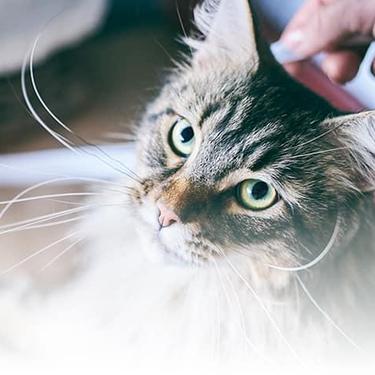
Learn how to make homemade cat treats that are healthy for your pet with this recipe from Hills Pet Nutrition.

Put your cat on a diet without them knowing
Our low calorie formula helps you control your cat's weight. It's packed with high-quality protein for building lean muscles, and made with purposeful ingredients for a flavourful, nutritious meal. Clinically proven antioxidants, Vitamin C+E, help promote a healthy immune system.
Put your cat on a diet without them knowing
Our low calorie formula helps you control your cat's weight. It's packed with high-quality protein for building lean muscles, and made with purposeful ingredients for a flavourful, nutritious meal. Clinically proven antioxidants, Vitamin C+E, help promote a healthy immune system.

